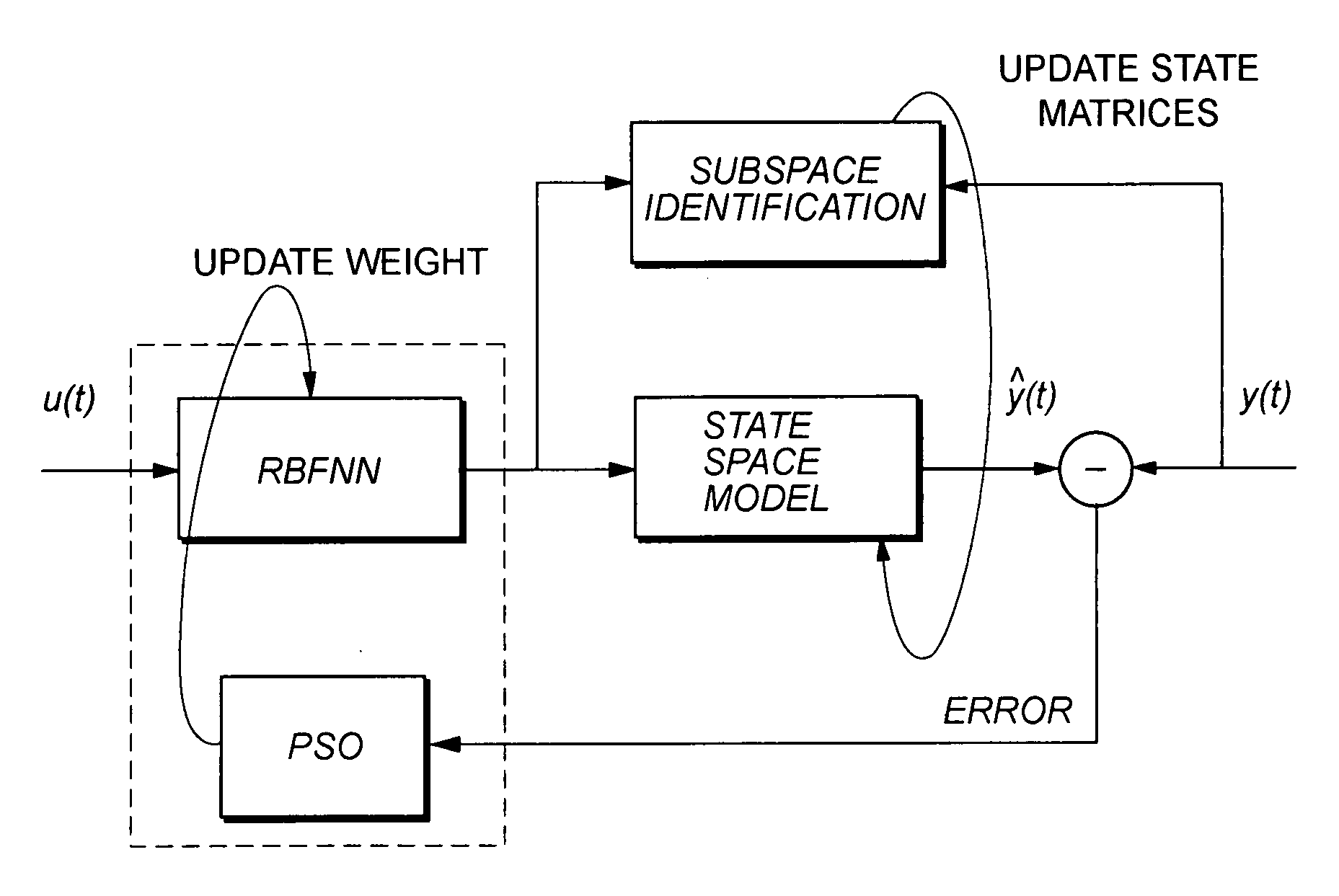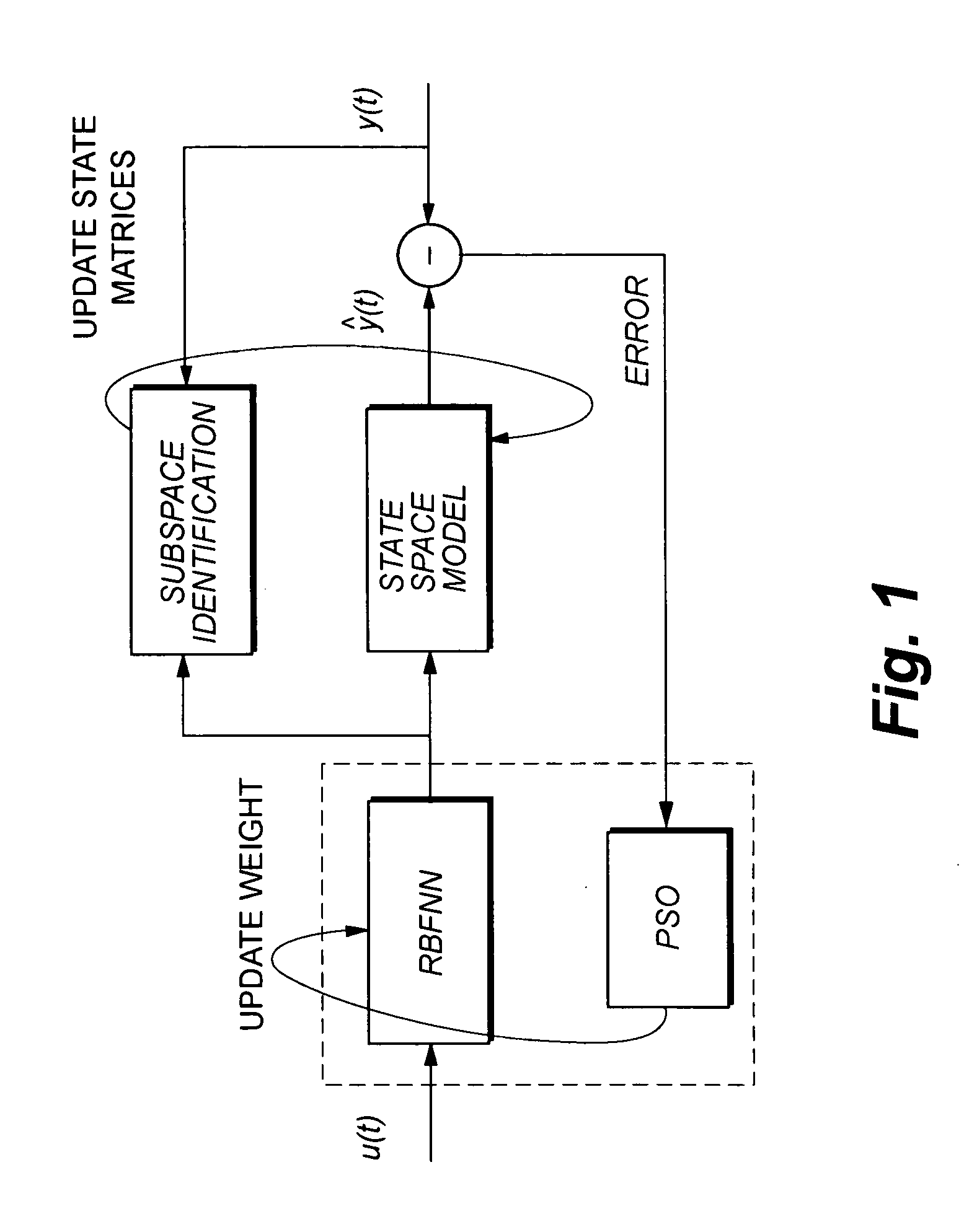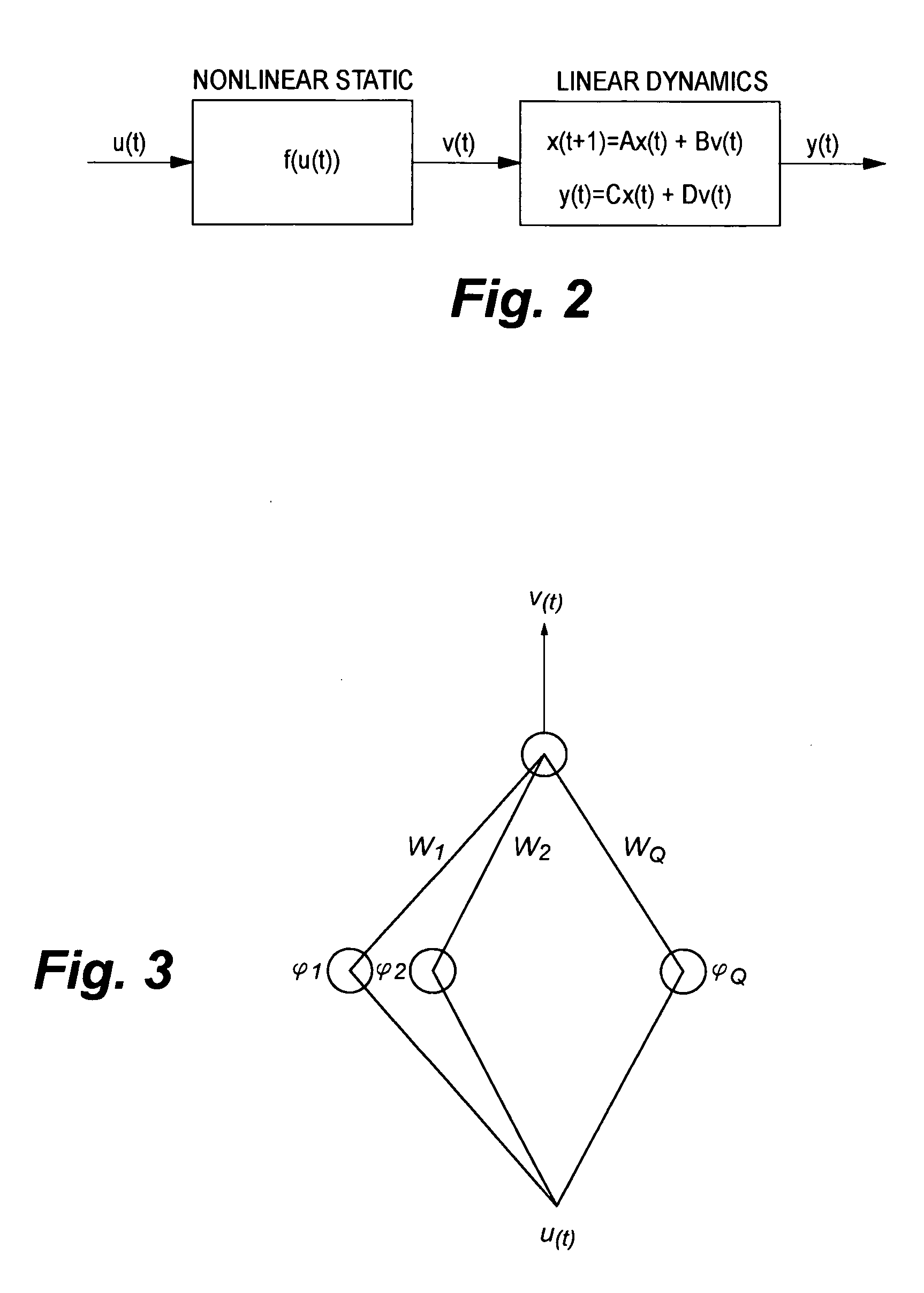Method for identifying Hammerstein models
- Summary
- Abstract
- Description
- Claims
- Application Information
AI Technical Summary
Benefits of technology
Problems solved by technology
Method used
Image
Examples
example 1
[0037]In a first example of the method, the Hammerstein type nonlinear process includes a static nonlinearity given by:
v(t)=sin(u(t))√{square root over (|u(t)|)} (10)
with the dynamic linear part being given by a third-order discrete time state-space system:
[x1(t+1)x2(t+1)x3(t+1)]=[1.8010-1.07010.2100][x1(t)x2(t)x3(t)]+[4.801.931.21]v(t)(11)y(t)=[100][x1(t)x2(t)x3(t)](12)
where, for this example, an RBF network of ten neurons is initialized with centers evenly distributed in the interval [−1.75,1.75]. The method provides accurate results with a mean squared output error converging to a final value of 4×10−4. FIG. 4 shows that the shape of the nonlinearity has been accurately estimated, and FIG. 5 shows the step response of the dynamic linear part. Convergence of mean squared error is shown in FIG. 6.
example 2
[0038]In a second example, the Hammerstein type nonlinear process includes a static nonlinearity given by:
v(t)=tanh[2u(t)]1.5≥u(t)(13)v(t)=exp(u(t))-1exp(u(t))+14>u(t)>1.5(14)
with the dynamic linear part being given by the following second-order discrete time state-space system:
[x1(t+1)x2(t+1)]=[11-0.50][x1(t)x2(t)]+[10.5]v(t)y(t)=[10][x1(t)x2(t)](15)
where, for this example, an RBF network with 15 neurons is initialized, and evenly distributed centers are chosen in the interval [0,4]. The method performs efficiently and, after twenty iterations, the mean squared error converges to a final value of 8×10−4. The estimates of nonlinearity and step response of the linear part are shown respectively in FIGS. 7 and 8. The squared error plot is shown in FIG. 9.
[0039]The simulation results given above show that the PSO-subspace method performs well in estimating the shape of the nonlinearities. Eigenvalues of the linear dynamic subsystems are shown below in Table I.
TABLE IEigenvalues of line...
PUM
 Login to View More
Login to View More Abstract
Description
Claims
Application Information
 Login to View More
Login to View More - R&D
- Intellectual Property
- Life Sciences
- Materials
- Tech Scout
- Unparalleled Data Quality
- Higher Quality Content
- 60% Fewer Hallucinations
Browse by: Latest US Patents, China's latest patents, Technical Efficacy Thesaurus, Application Domain, Technology Topic, Popular Technical Reports.
© 2025 PatSnap. All rights reserved.Legal|Privacy policy|Modern Slavery Act Transparency Statement|Sitemap|About US| Contact US: help@patsnap.com



